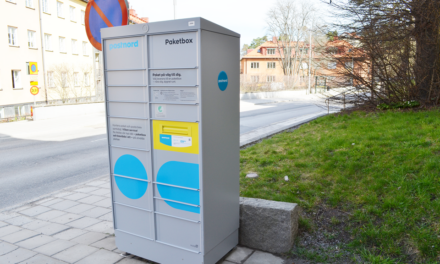
Dept of Post needs to get its act together
Liberalisation and globalisation have dealt dual blows to the country's postal lifeline, India Post. Its own inability to cope with technological advancements has made it worse. On one hand, there is an influx of private players in the courier industry. Semi-organised local courier companies such as Blazeflash and DTDC are aggressive in the market along with larger, organised courier companies like DHL and TNT. On the other hand, information and communication technologies such as e-mail, e-fax, high-speed scanning, portable document formats, etc. are fast gaining momentum. Since the new formats are more efficient, accurate and convenient, they are being widely used by consumers. As a result, India Post's balance sheet is screaming red. The organisation's deficit in 2004-05 was Rs 1,475 crore, up 8 percent from the previous year. Snail mail has taken the biggest hit. According to Department of Post (DoP) officials, the mail traffic at India Post has fallen by close to 40 percent over the past decade. In fact, the postal department only makes money on postcards and foreign mail. Professor S Ramchander, consultant, says, "For India Post, the warning signs in the urban sector are clearly on the wall and have been so for some time." India Post is now focusing on change. Symbolically, it first changed the colour of its uniform from khaki to blue during the 150th birthday celebrations. It has introduced a range of new products such as the greeting post, e-bill post, e-post, media post, etc. Greeting post consists of greeting cards which come with pre-paid postage envelopes, eliminating the need for stamps. E-bill post enables you to pay bills electronically. With the e-post service, you can receive an e-mail even if you do not have an email ID. Just this month, minister for communications and information technology Dayanidhi Maran approved the introduction of direct post for distribution of advertising material by post offices. This initiative will help DoP increase its market share of the burgeoning B2B and B2C segments of corporate communications sector. The institution has also been advertising on the sides of mail vans and post cards. However, despite brave efforts, India Post's clout is rapidly reducing. For example, the express (courier) market is growing fast, but India Post just can't seem to cash in. According to a World Bank survey, in 2002-03, the express industry had grown to Rs 2,493 crore, of which organised players possessed 65 percent share, semi-organised players 25 percent and India Post 10 percent. Initially, IPS' speed post prices were double the prices that private companies charged. "As a public sector product, we didn't have the flexibility to offer discounts to large clients," explained a DoP official. In such a bleak scenario, India Post Service (IPS) desperately needs to get its act together. It needs to tap the inflow of new customers. Professor M Janakiraman, associate professor in marketing, IIM-Lucknow, explained that "Making customers aware of the services offered by India Post is the first step to creating a market." An effective and widespread marketing campaign must be undertaken. Professor Janakiraman feels that IPS should "tap emerging opportunities from e-commerce". Several e-commerce companies such as rediff.com and bazee.com are establishing and developing their businesses. These companies are dependent on express companies for delivering goods ordered online. Currently, studies by AC Nielsen ORG-MARG and World Bank depict that customers have negative perceptions about India Post which must be altered. Rita Banerjee, lecturer, wouldn't trust IPS to deliver her mail because she felt that it was too slow. "They don't even take inquiries seriously," she added. Such opinions must be transformed and people must associate the name India Post Service with efficiency, speed and reliability. India Post must also aim at cutting costs to improve profitability. Professor S Ramchander said, "The gap between costs and realisations across the entire product range makes for depressing reading." A method of improvement could be to use the customer portfolio prioritisation technique used by several international corporations. Under this, one develops value added services for top-end clients while outsourcing the bottom end to smaller regional operators. "This will not only decrease cost but also improve the outsourcing partner's service delivery to customers" said Prof Janakiraman. Similarly, India Post's pricing strategy needs reworking. Although policies such as operating unremunerative post offices in the rural areas are in tandem with the institution's social objectives, it leads to the demise of its competitiveness. Professor SK Parthasarathy, former secretary, DoP, says basic postal rates which are fixed with Parliamentary approval have been below cost of operation. "This has contributed to its bulky deficits", he added. IPS's case starkly contrasts with US Postal Service's (USPS) surplus of $3.9 billion and UK's 220 million pound surplus. However, never underestimate the power of cooperation. India Post should not allow itself to get isolated. If there is any opportunity to pool resources for research and development, etc. then it should join hands with a private agent. Citing a case in point, Prof Janakiraman mentions the agreement between USPS and FedExpress for space sharing in cargo aircraft for shipments. Improving rural postal infrastructure is essential for India Post too. It will contribute to the institution's popularity as well as tap a plethora of new consumers as 72 percent of the Indian population resides in rural areas. Currently, the rural postal network consists of 1,39,081 post offices, which is 90 percent of the total strength of its post offices. The average area served per rural post office is 21.26 sq km and population coverage of around 5,500. According to Dr LK Vaswani, Professor, Institute of Rural Management, Anand, India Post's reform strategy should revolve around achieving social objectives and simultaneously reducing the institution's deficit. Revenue generation should be prioritised along with increasing investments. He believes that investments in improving technology is especially necessary. "Instead of allocating more and more expenditure to employees' salaries, the institution should concentrate on combining physical reach with electronic technologies," he said. New services should be introduced as per consumers' needs. To increase efficiency further, Dr Vaswani suggested that the existing rural post network should be consolidated. Towards this, India Post must establish units such as a strategic business unit to promote rural services. According to Thomas Matthew, managing director, UPS Jet Air Express India, India Post should concentrate on its "core competency", delivering domestic mail and package even to the interiors of the country. "Private express companies have a direct presence only in metros," he said. Clearly, India Post needs to focus on its strengths and capitalise on the depth of coverage it can provide. It's also time for DoP to reinvent India Post-both technologically and strategically.













